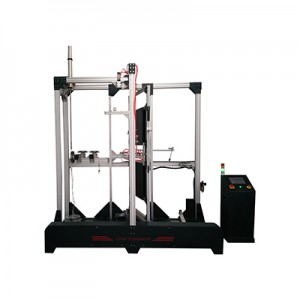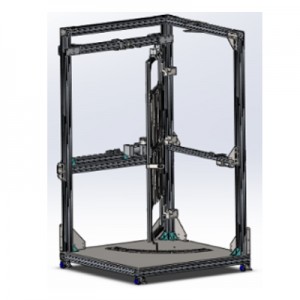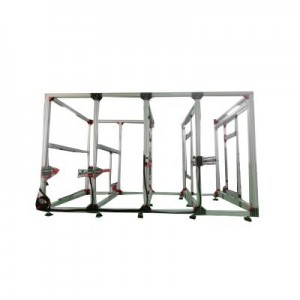LT-JC04 Multi-point Locker Fatigue Tester
Technical Parameters:
1. Structure: (Aluminum profile)
2. Suitable for multi-point locking of sliding doors and windows
3. Transmission mode: rotary cylinder + push-pull cylinder
4. Torsion angle: 0-180 degrees adjustable
5. Torsion speed: 0-20 times/min adjustable
6. Weight: 10N
7. Control mode: PLC+touch screen
8. Volume: length 1.5*width 0.7*height 1.8 meters
9. Power supply: AC220V, 50HZ
Standards:
JG/T 215-2017 Building door and window hardware multi-point lock
-4.4.2 Repeated opening and closing
-5.4.2 Repeated opening and closing
Test Method:
4.4.2 Repeated opening and closing
After 25,000 times of repeated opening and closing, the operation is normal and does not affect the normal use. and should be satisfied:
a) The operating torque of the gear-driven multi-point locking device should not be greater than 1 N·m; The sliding force of the connecting rod-driven multi-point locking device should not be greater than 15 N;
b) The amount of wear on the working surface of the locking point and the locking place of the lock seat should not be more than 1 mm.
5.4.2 Repeated opening and closing
The multi-point locking device is installed on the test simulating door and window of the appropriate size according to the actual use state, and tested in the direction parallel to the sash and perpendicular to the door and sash respectively
Apply a force of 10*]N in the direction at the same time, the test frequency is 250 times/h~275 times/h, every 5 000 test cycles are completed, check and follow the product instructions
Book of requirements for lubrication. And the test is carried out according to the following method:
a) Measuring the operating torque of the gear-driven multi-point locker with a measuring tool with an accuracy of not less than 0.1 N·m; Measure the connecting rod with a gage with an accuracy of 1 N or higher
type drive multi-point locker sliding force;
b) Use a measuring tool with an accuracy of not less than 0.02mm to measure the spacing between the frame fans at the locked place before and after the test, and calculate the amount of change, which is the working surface
Write your message here and send it to us




















